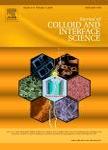版权所有:内蒙古大学图书馆 技术提供:维普资讯• 智图
内蒙古自治区呼和浩特市赛罕区大学西街235号 邮编: 010021

作者机构:Qingdao Univ Sci & Technol Coll Chem Engn State Key Lab Base Ecochem Engn Key Lab Multiphase Flow React & Separat Engn Shand Qingdao 266042 Peoples R China Hainan Normal Univ Coll Phys & Elect Engn Key Lab Laser Technol & Optoelect Funct Mat Hainan Haikou 571158 Peoples R China
出 版 物:《JOURNAL OF COLLOID AND INTERFACE SCIENCE》 (J. Colloid Interface Sci.)
年 卷 期:2025年第684卷第Pt 2期
页 面:207-214页
核心收录:
学科分类:081704[工学-应用化学] 07[理学] 070304[理学-物理化学(含∶化学物理)] 08[工学] 0817[工学-化学工程与技术] 0703[理学-化学]
基 金:Natural Science Foundation [NSFC22208179, NSFC21978141] The 2023 Shandong Provincial Universities Youth Innovation Team Development Plan [2023KJ098] Shandong Provincial Natural Science Foundation [ZR2020ME060] State Key Laboratory of Advanced Technology for Materials Synthesis and Processing (Wuhan University of Technology) [2024-KF-17] Key Laboratory of Laser Technology and Optoelectronic Functional Materials of Hainan Province [2024LTOM05] Open foundation of State Key Laboratory of Chemical Engineering [SKL-ChE-24B04]
主 题:Rh single atoms Dual active sites Hollow microflower Sulfur-vacancy Photocatalytic hydrogen evolution
摘 要:Modifying CdZnS with precious metal at the atomic scale is a promising approach for maximizing its photocatalytic performance. Herein, Rh single atoms (Rh1) were successfully anchored on hollow microflower MoS2/ sulfur-vacancy-rich CdZnS (CZS-SVs) to boost H2 generation. The optimal catalyst Rh1@MoS2/CZS-SVs reaches a H2 productivity of 39,827 mu mol h- 1 g- 1, representing 5.64 and 4.36-folds enhancement compared with pristine CZS and CZS-SVs, respectively. The enhanced H2 generation activity was due to Rh single atoms and sulfurvacancy defects, both of which can effectively promote carrier separation and prolong carrier lifespan. Notably, density functional theory (DFT) calculations suggest that introducing Rh single-atom sites on MoS2/ CZS-SVs significantly facilitated electron transfer, leading to efficient conversion of the H* intermediate to H2 (|Delta GH*| = 0.44 eV). Consistently, in situ Raman analysis confirmed Rh and S dual proton-reduction sites. Due to the accumulation of abundant electric charges, S atoms sites can also participate in H2 evolution process.